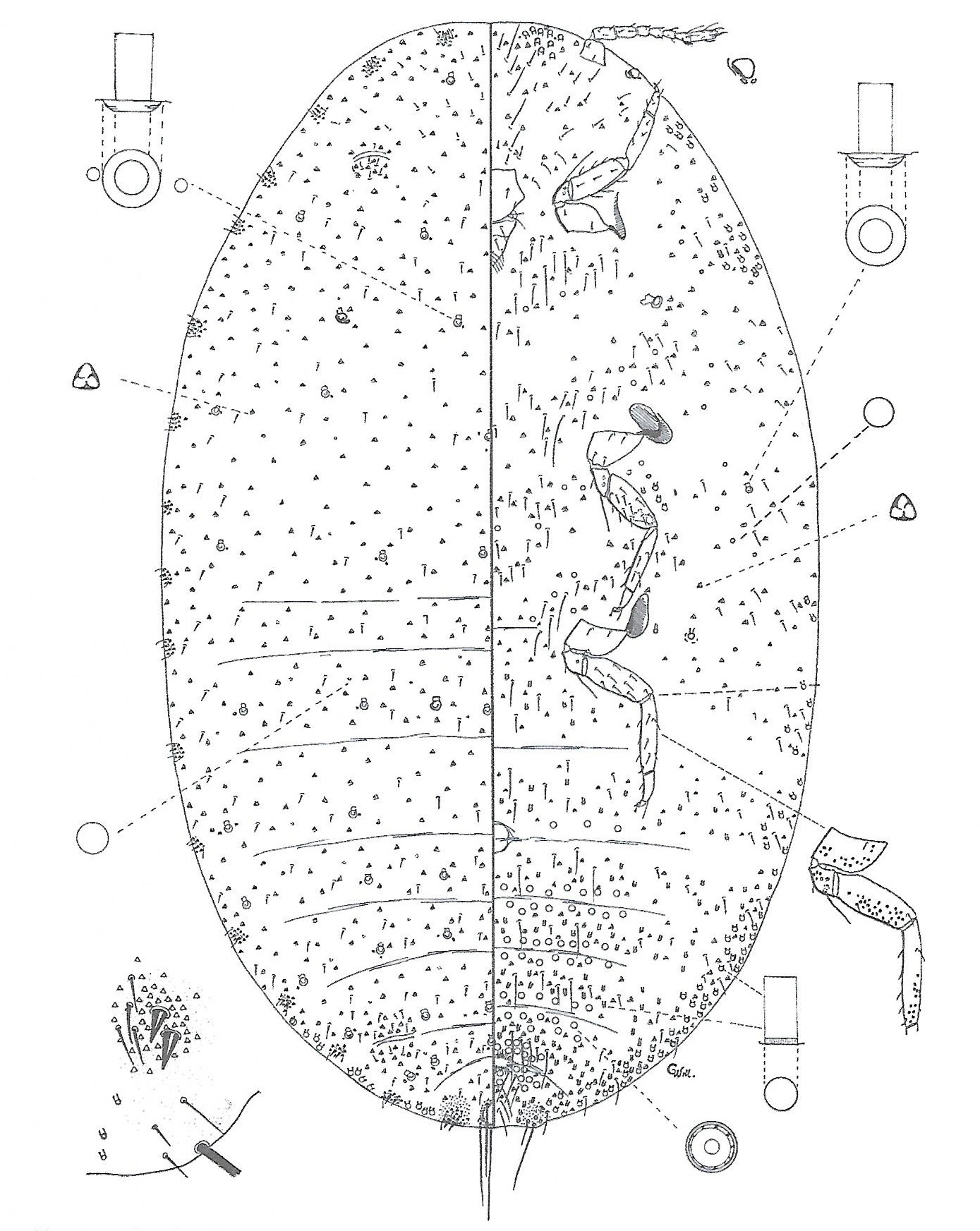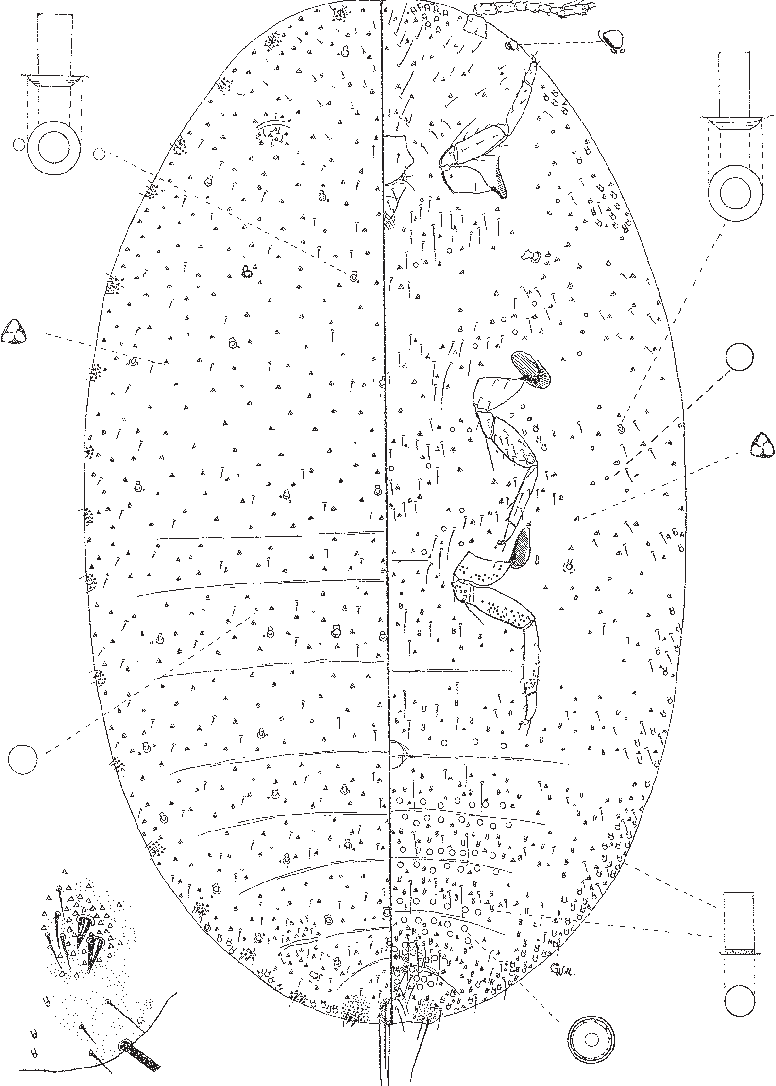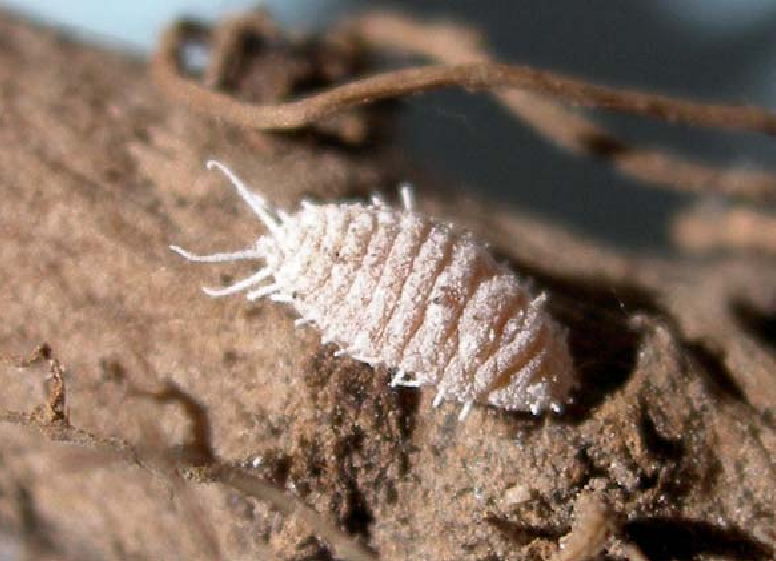Valid Names Results
Pseudococcus pabulum Granara de Willink, 2012 (Pseudococcidae: Pseudococcus)Nomenclatural History
- Pseudococcus pabulum Granara de Willink 2012. Type data: BRAZIL: Paraná, Curitiba, 5/5/1979, on Trifolium repens. & T. pratense by M. A. Pizzamiglio. Holotype, female, by original designation Type depository: Washington: United States National Entomological Collection, U.S. National Museum of Natural History, District of Columbia, USA; accepted valid name Illustr.
Common Names
Ecological Associates
Hosts:
Families: 2 | Genera: 6
- Asteraceae
- Erigeron bonariensis | PachecKaBa2020
- Sonchus oleraceus | PachecKaBa2020
- Fabaceae
- Glycine max | GranarDu2012
- Lotus corniculatus | GranarDu2012
- Medicago sativa | GranarDu2012
- Trifolium pratense | GranarDu2012
- Trifolium repens | GranarDu2012
Geographic Distribution
Countries: 3
- Argentina | GranarDu2012
- Brazil | GranarDu2012
- Uruguay | GranarDu2012 PachecKaBa2020
Keys
- PachecKaBa2020: pp.504-505 ( Adult (F) ) [Pseudococcidae in Uruguay]
- GranarDu2012: pp.35 ( Adult (F) ) [Pseudococcus affecting forage crops]
Remarks
- Systematics: Due to the presence of translucent pores in all segments of the hind legs, except the tarsus, P. pabulum is similar to the group formed by P. sorghiellus, P. dolichomelos and Miller and P. dysmicus. It differs because it has 1) antennas with 487 to 592 μm or more (360-490 μm in P. dolichomelos); 2) lacks tubular canals with oral border between the previous ostioles and between C2 and C3 (only found in material from Brazil, in one copy and on one side of the body) (present in P. dolichomelos); 3) 66 ducts with oral rims on cephalothorax and dorsal abdomen, forming submarginal, lateral, submedial and medial lines (47 ducts in submarginal, lateral and submedial longitudinal lines in P. dolichomelos); 4) 0-3 ducts with oral rims between C5 and ventral C11 (four ducts in P. dolichomelos); and 5) multilocular pores and oral collars present in variable number between mesothoracic coxas, scarce in the reviewed specimens from Brazil, but numerous in the material from Uruguay and Argentina (absent in P. dolichomelos). Pseudococcus pabulum could also be confused with P. meridionalis, described for Chile, because they have dorsal ducts with oral rims in the middle area of the abdomen and ducts with oral collars marginal and submarginal on the dorsum. They differ because P. pabulum has a group of ducts with collar and multilocular pores close to the mesocoxae, those that are absent in P. meridionalis. (Granara de Willink & Gonzalez, 2018)
- Structure: With translucent pores in coxa, trochanter, femur and tibia; eyes with 1-3 discoidal pores on a surface membranous dorsal ducts with edge oral, in the head, are usually absent between the C2 and C3 cerars, in the thorax and abdomen form longitudinal lines, submarginal, lateral, submedial and medial Ventral surface with ducts with oral collar, in the frontal area, in the remaining segments are present or absent; multilocular pores in the abdomen and the middle area of the thorax, behind the mesocoxa, normally associated to ducts with oral collar, in number variable; antennas between 432 - 565 μm, the femur plus tibia and tarsus measured between 630 - 752 μm. Cerarios: C6 with 3 conical setae, C4 and C8 reduced with a conical setae and 4 or 5 trilocular pores. (Granara de Willink & Dughetti, 2012)
- General Remarks: Detailed description, illustration and photograph in Granara de Willink & Dughetti, 2012.
Illustrations
Citations
- GranarDu2012: description, diagnosis, distribution, illustration, key, taxonomy,
- GranarGo2018: diagnosis, distribution, host, illustration, key, taxonomy, 6, 10-14, --40
- PachecKaBa2020: diagnosis, distribution, host, key, phylogeny, 505, 506, 515






